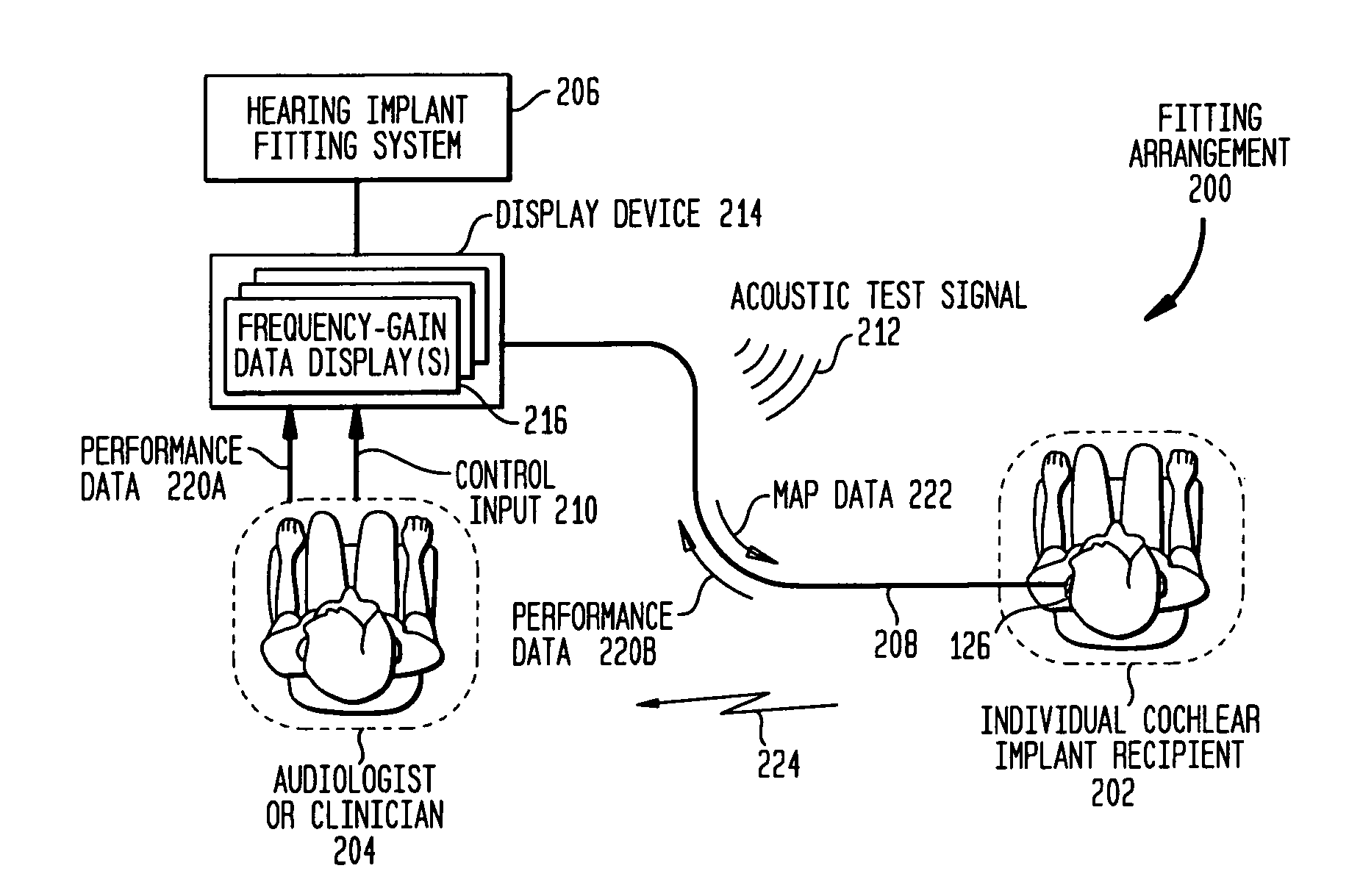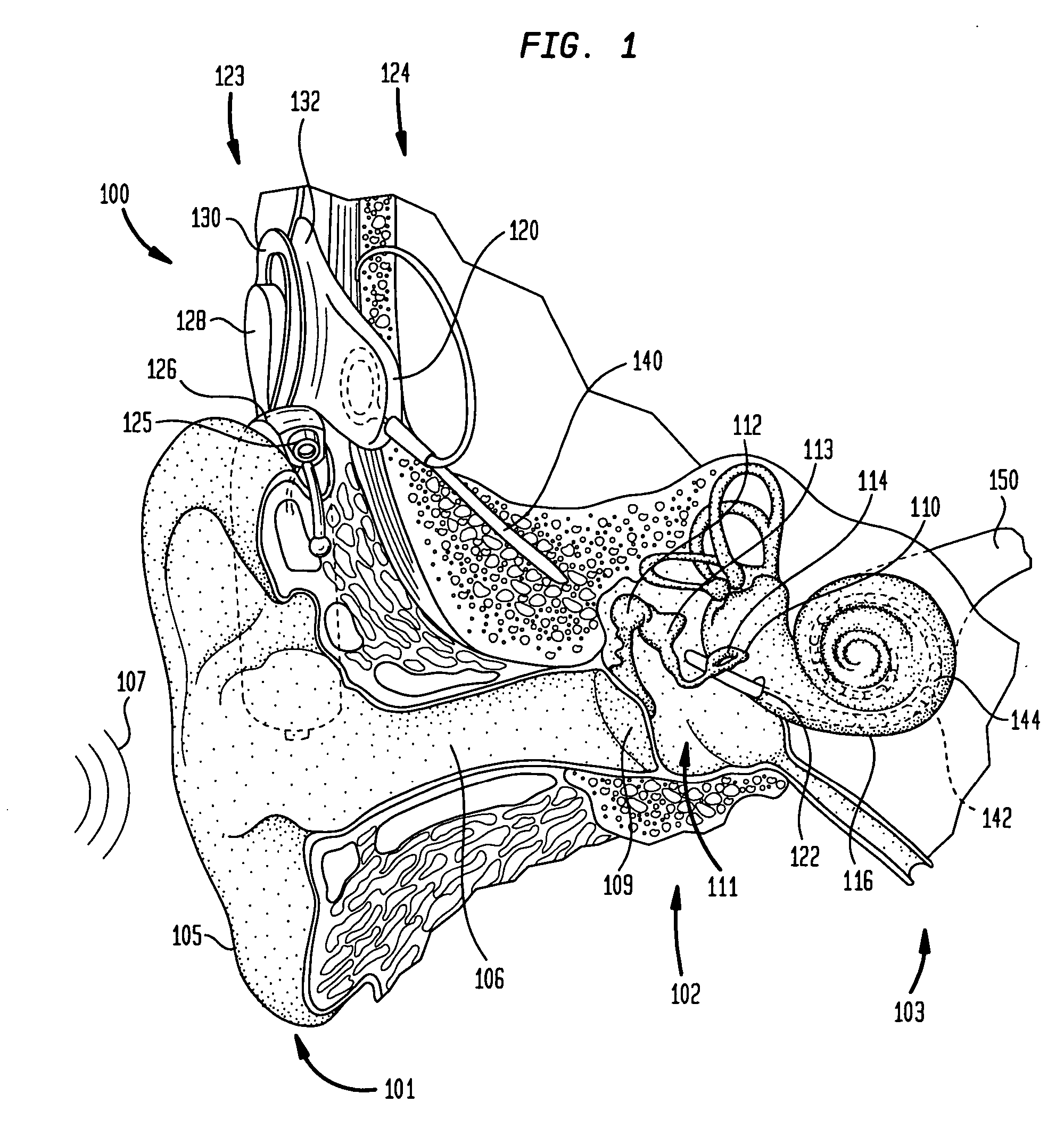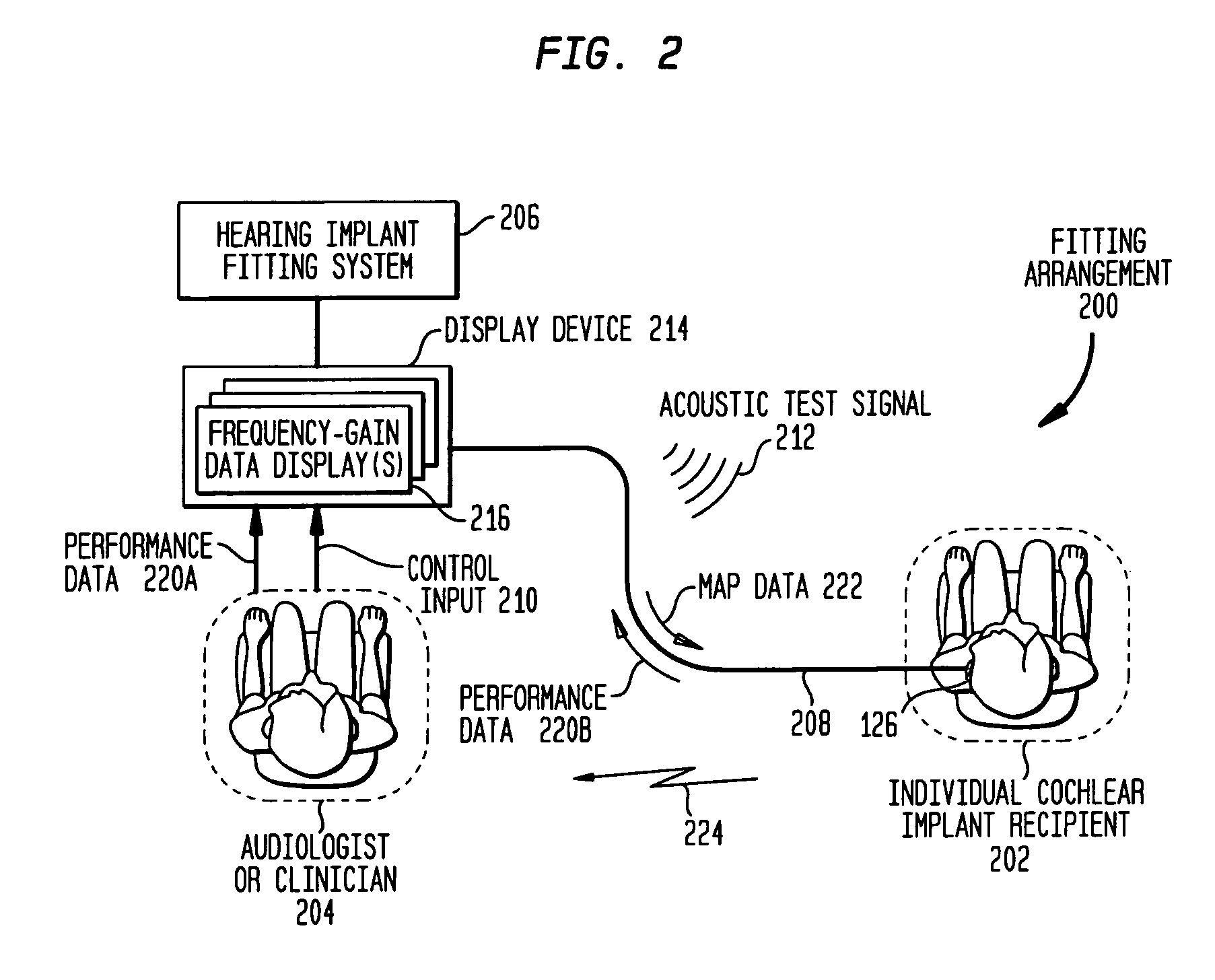Prosthetic hearing implant fitting technique
a technology for prosthetic hearing implants and fittings, applied in the field of prosthetic hearing implants, can solve the problems of profound deaf people, inability to derive suitable benefits from conventional hearing aid systems, and relatively complex fitting process
- Summary
- Abstract
- Description
- Claims
- Application Information
AI Technical Summary
Problems solved by technology
Method used
Image
Examples
Embodiment Construction
[0023] Aspects of the present invention are generally directed to a technique for fitting a prosthetic hearing implant which can be performed by an audiologist using conventional acoustic-based data displays, control inputs and acoustic test signals to determine the electrical stimulation parameters required to operate the hearing implant. Embodiments of the present invention may relieve the audiologist of the need to explicitly set and map the electrical stimulation levels. Such setting and mapping of electrical stimulation involves procedures that may be unfamiliar to practitioners who are largely trained to fit conventional hearing aids using acoustic test signals. Hence, embodiments of the present invention assist those practitioners to perform the task of fitting a prosthetic hearing implant.
[0024] Prosthetic hearing implants include but are not limited to hearing aids, auditory brain stimulators, and Cochlear™ implants (also commonly referred to as Cochlear™ prostheses, Cochl...
PUM
 Login to View More
Login to View More Abstract
Description
Claims
Application Information
 Login to View More
Login to View More - R&D
- Intellectual Property
- Life Sciences
- Materials
- Tech Scout
- Unparalleled Data Quality
- Higher Quality Content
- 60% Fewer Hallucinations
Browse by: Latest US Patents, China's latest patents, Technical Efficacy Thesaurus, Application Domain, Technology Topic, Popular Technical Reports.
© 2025 PatSnap. All rights reserved.Legal|Privacy policy|Modern Slavery Act Transparency Statement|Sitemap|About US| Contact US: help@patsnap.com



